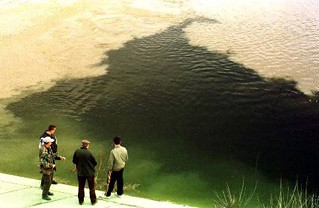(Source: http://planetgreen.discovery.com)
Heavy metals do not break down and are “bio-accumulative” in plants, animals and the environment. This means that the level of toxins builds up in an organism over time, increasing its toxicity and threat to local ecosystems. Toxins may also be passed on to other species if a toxic organism is eaten. Therefore, living organisms face high risks with long-term and chronic exposure to heavy metals.
Sources and Sinks of Heavy Metals
(Source: http://pubs.usgs.gov)
To read more about the quantitative distribution of heavy metals and cyanide in the rivers and sediments in the Baia Mare area, please click on Environmental Impacts.


